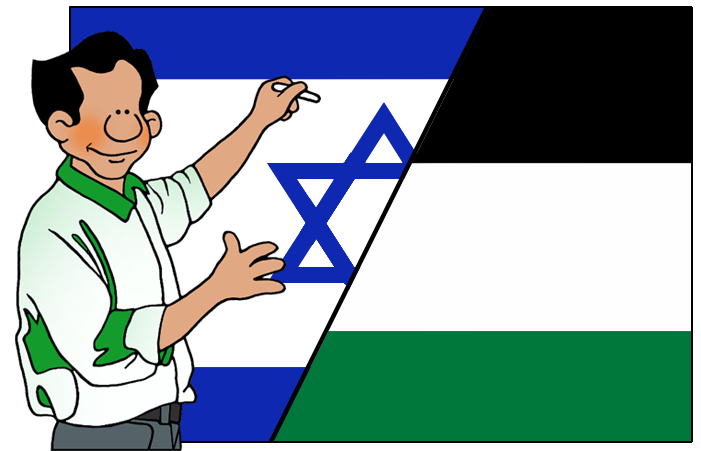
Fun Facts about the Holy Land
Israel Among its 9 million citizens, it is a land of diversity, home to Jews, Christians, Muslims, Druze, and Bedouins. Additionally, immigrants from more than 100 countries have added to the vibrant traditions, celebrations, tastes, aromas, and rich cultural experience. You are sure to hear a lot of Hebrew and Arabic along with Greek, Russian, Ukrainian, and thankfully English.
The entire region has been conquered by many armies of the centuries, including: Assyrians, Babylonians, Persians, Greeks, Romans, Crusaders, and Turks.
Ancient Jew and the Romans who invaded the area did not get along well. In 70 AD, the Romans destroyed the Second Temple. In an effort to break the link between the people and the land, the Roman Emperor Hadrian renamed the land Palestine. The name was meant to taunt the Jews because it was taken from the name of their ancestral enemy, the Philistines. Jews were scattered around the world in the Diaspora. The United Nations reestablished the land of Israel on May 14, 1948, after the Holocaust in Europe which killed 6 million Jews. The country occupies 1/6 of 1% of the land in the Middle East.
Jerusalem is held special to Jews, Muslims, and Christians. Each religion has special sites the believers visit. Among the sites of interest for the Jews, there is the site of the First and Second Temple, the Wailing Wall, and the City of David. For Muslims, it is the home of the Al-Aqsa Mosque (the third holiest site in Islam) and the Dome of the Rock (where Muhammad ascended to heaven). For Christians, sites such as the Garden Tomb, the Mount of Olives, and the Church of the Holy Sepulchre are held in reverence. There is so much to see in Israel. That's why it has more museums per capita than any other country in the world. Jerusalem alone has more than 2,000 active archaeological sites.
The Western Wall, believed to be the last remaining part of the Second Temple, is the holiest site for Jews to pray.
People have lived in Jerusalem for 5,000 years. The Old City of Jerusalem is enclosed in a wall about 2.5 miles long. The walls are 40 feet tall and 8 feet thick. There are 34 watchtowers along the wall and 7 gates. The Old City is divided into the Jewish Quarter, the Muslim Quarter, the Christian Quarter, and the Armenian Quarter. In 1981, the Old City of Jerusalem was declared a UNESCO World Heritage Site.
The olive tree is the national tree of Israel. Olive trees in the Mount of Olives are estimated to be up to 2,000 years old. Israel is the only country in the world to have more trees than it did 50 years ago. The gazelle is the national animal of Israel. There is no national dish in Israel, but if you go, you'll be able to eat hummus, tahini, malawach, baba ganoush, falafel, shawarma, and rugelach.
The original town of Nazareth, where Jesus grew up, is believed to have only had a population between 100 - 150 people. The prophet Isaiah prophesied that the Messiah would come from Nazareth nearly 600 years before the village even existed. (It was established around 100 BC.) The Basilica of the Annunciation, a Christian pilgrimage site, is believed to be where the angel Gabriel appeared to Mary. And, yes, Joseph, Nazareth has had a long history of skilled carpenters.
The Dead Sea, shared by both Israel and Palestine, is the lowest point on the planet at more than 1,315 feet below sea level. The water in the Dead Sea is 9.6 times saltier than water found in any ocean. It's described as "hypersaline". It's so salty that you can't sink in the water. But, if you swim in it, take care because you don't want that extremely salty water in your eyes or mouth.
A national park of both historic and prophetic importance is Megiddo. At a crossroads between ancient Egypt, Persia, and Turkey, Megiddo was a stronghold conquered by many powers. It also has prophetic importance because John wrote about it in the book of Revelation. It's where the final battle of good against evil takes place, between Jesus and Satan. If you read the Bible, you already know who wins that one.
Palestine declared itself a state in 1988; it includes the Gaza Strip and the West Bank. (Not all member of the United Nations recognise its statehood.) The city of East Jerusalem is the declared capital, but currently Gaza City Ramallah serves as the defacto capitol. There is no official currency so people use the US Dollar, the Jordanian Dinar, and the Israeli Shekel.
The West Bank is 90 mile long and 30 mile wide. The Gaza Strip is 25 miles long and 6.2 miles wide.
Among the dishes you would enjoy there are musakhan, falafel, hummus, mansaf, shawarma, fatayer, maqloubeth, qedreh, and fteer.
Oh, little town of Bethlehem is located in the West Bank. Saint Heleha, the mother of Emperor Constatine made a pilgrimage to the area in 326 AD. She believed she located where Jesus was born and the Emperor built a bascilica over the cave. The Church of the Nativity still stands there today.
Also in the West Bank, Jericho is believed to be one of the oldest continuously inhabited cities in the world. Portions of the ancient walls that protected the city, built of stone and mud brick, are still one of Jericho's most notable features. And, you can take a cable car ride up to the Mount of Temptation, where Jesus was tempted by the Devil.
Palestine is home to the oldest olive trees in the world, dating back 4,000 years!